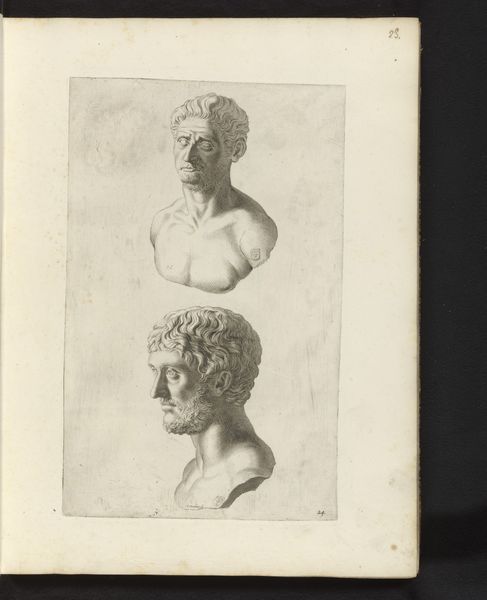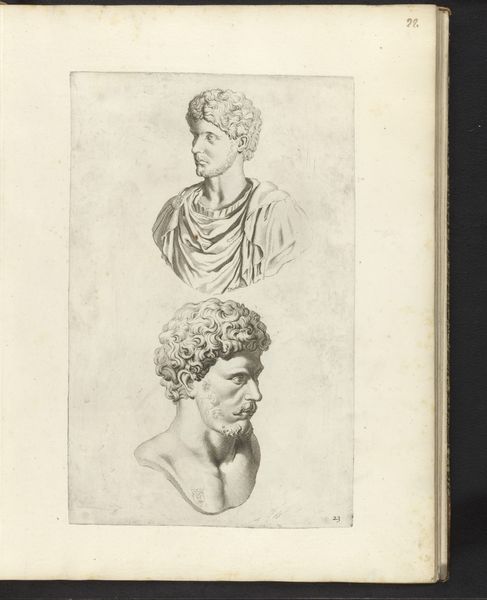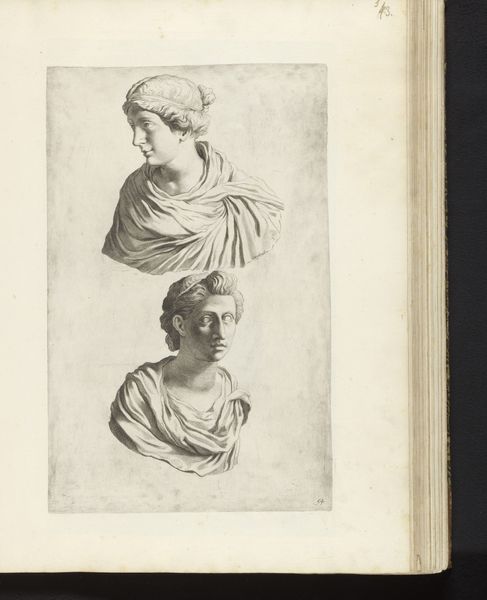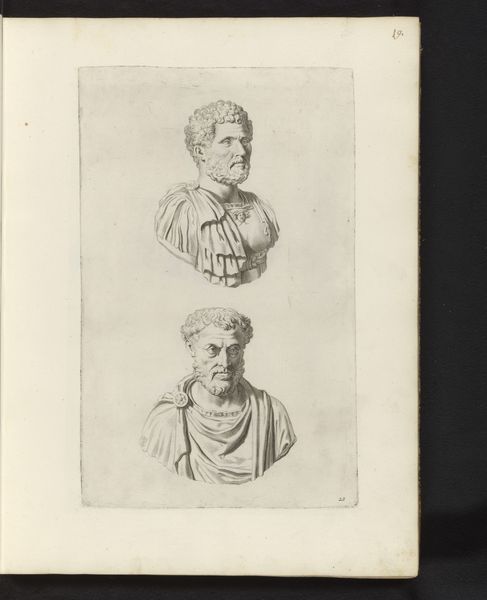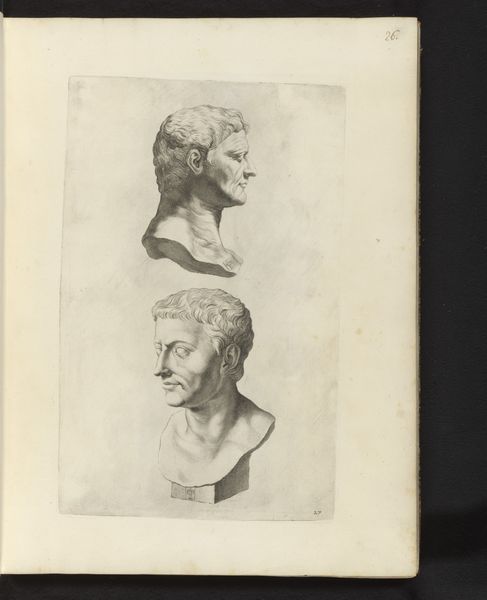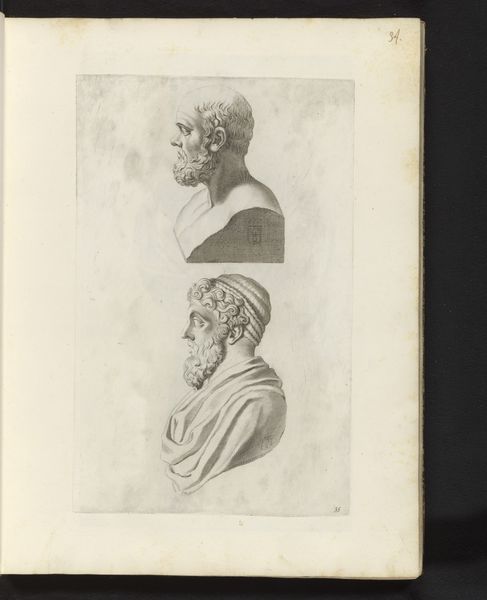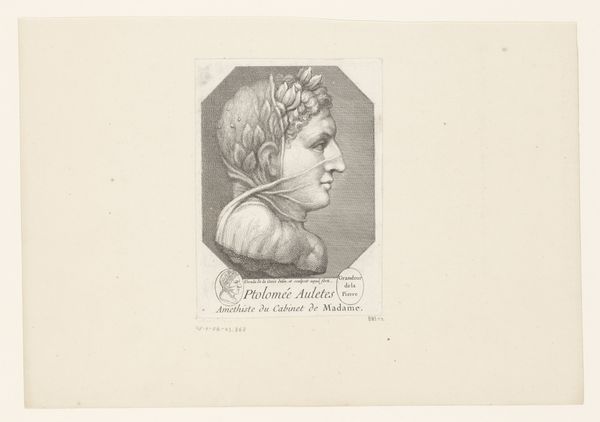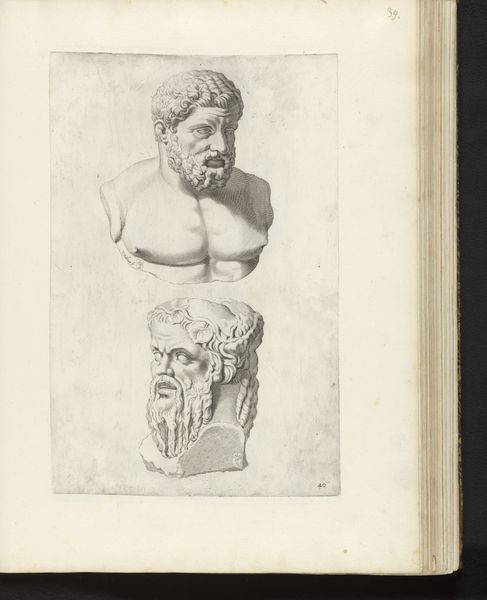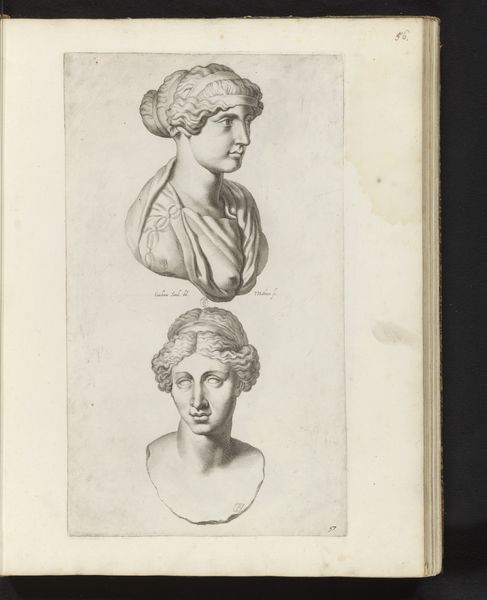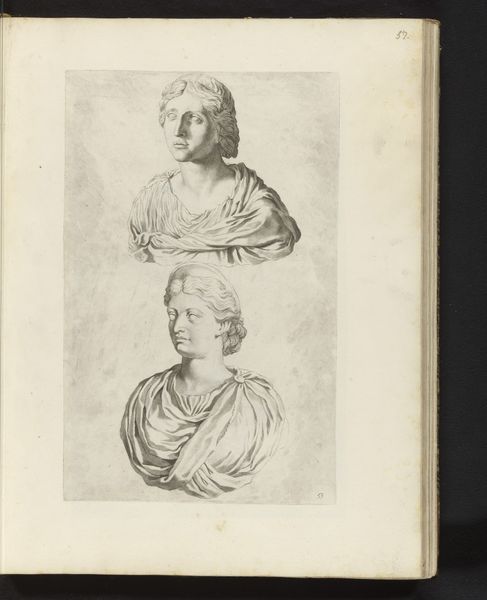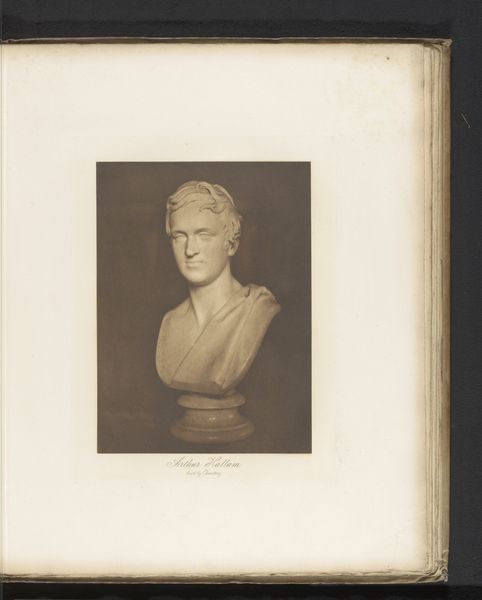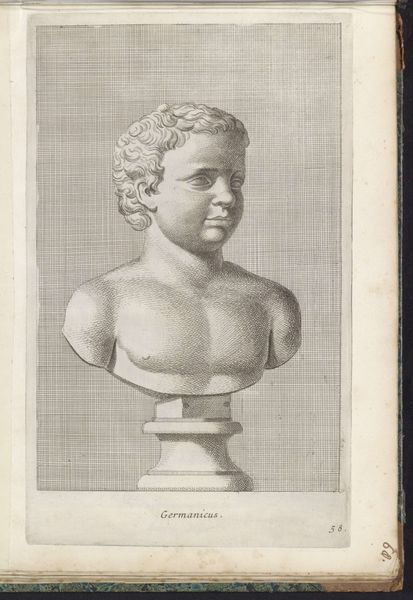
drawing, pencil
#
portrait
#
drawing
#
classical-realism
#
figuration
#
pencil
#
sketchbook drawing
#
portrait drawing
Dimensions: height 373 mm, width 235 mm
Copyright: Rijks Museum: Open Domain
Theodor Matham created this drawing of two portrait busts of boys in pen and brown ink around the 17th century. At first glance, what stands out is the stark simplicity and symmetry; the busts are vertically aligned, each displaying a similar youthful figure draped in classical attire. Notice the use of line—fine, controlled strokes that define the contours of the faces and the folds of their garments. Matham masterfully employs hatching and cross-hatching to create tonal variations, giving depth and volume to the figures. This technique is critical in translating three-dimensionality onto a two-dimensional surface. The blank space surrounding the busts is not merely background; it is integral to the composition, emphasizing the isolated, almost clinical study of form. This approach might be seen as an early exploration of the part-to-whole relationship, anticipating later structuralist ideas. Consider how Matham's drawing operates as a sign; the classical drapery and idealized features signify not just portraiture, but also a connection to classical ideals of beauty and virtue. The drawing invites us to deconstruct the visual language of portraiture and to question the values it seeks to uphold.
Comments
No comments
Be the first to comment and join the conversation on the ultimate creative platform.
